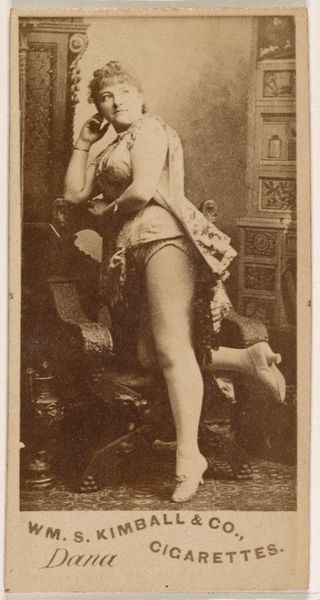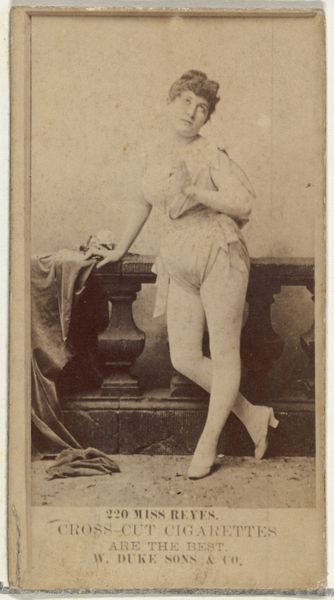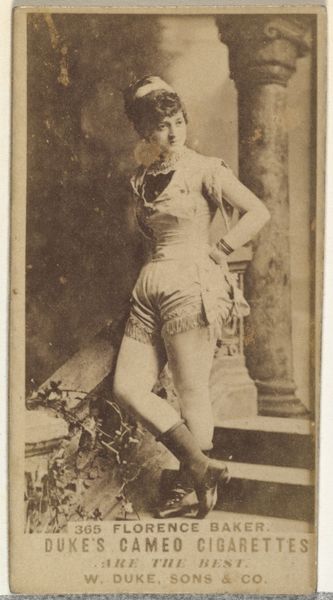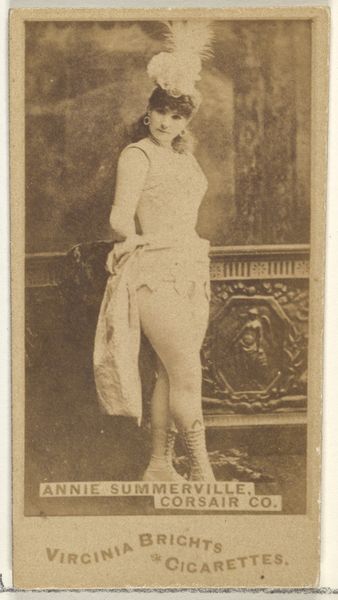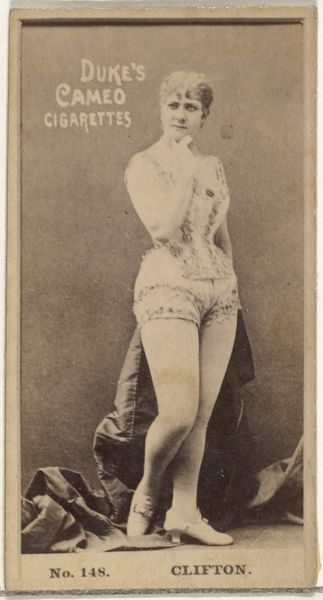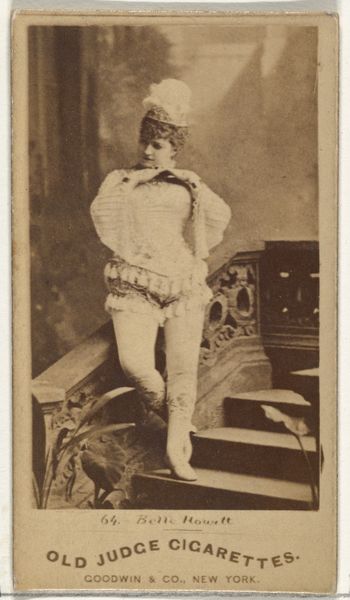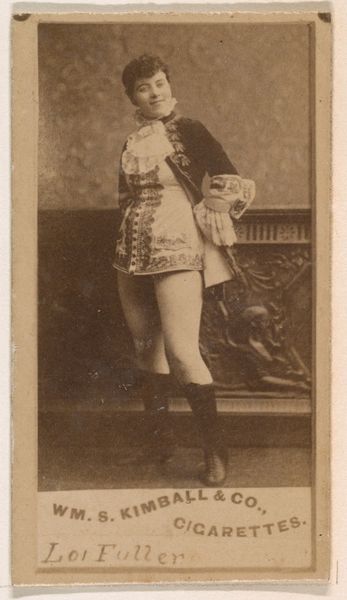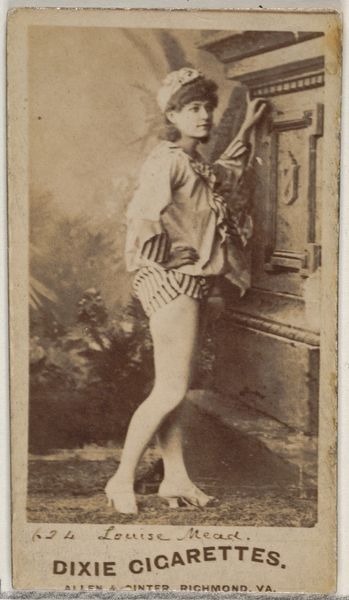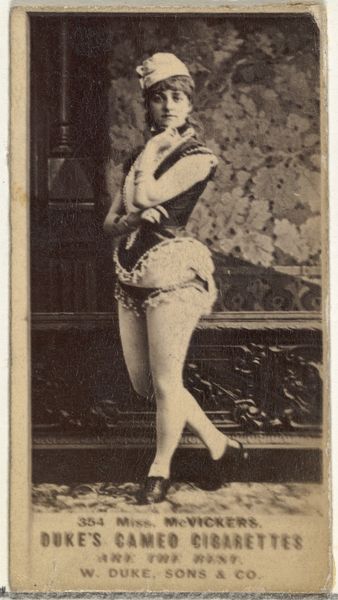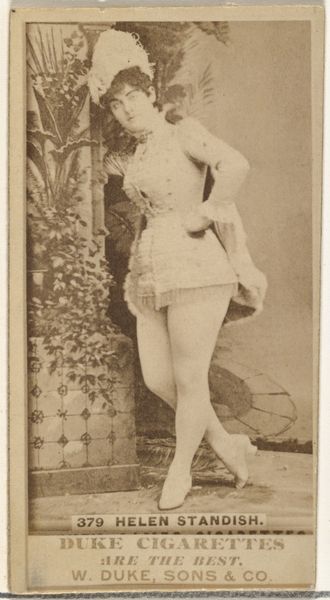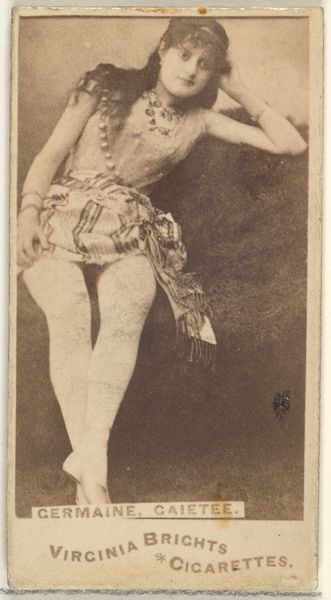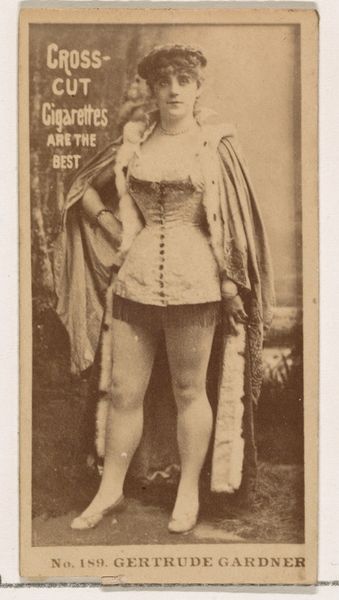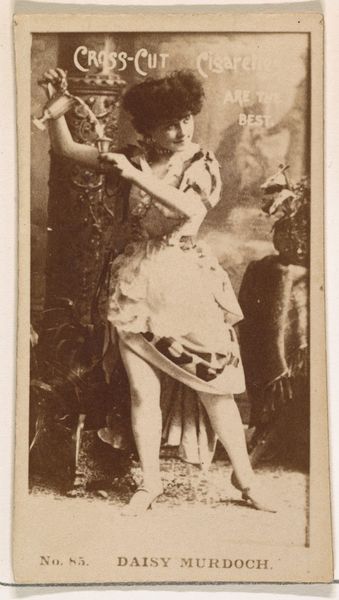
Card Number 331, Von Oastan, from the Actors and Actresses series (N145-3) issued by Duke Sons & Co. to promote Cross Cut Cigarettes 1880s
0:00
0:00
drawing, print, c-print, photography, albumen-print
#
portrait
#
drawing
#
16_19th-century
# print
#
c-print
#
photography
#
historical photography
#
19th century
#
genre-painting
#
albumen-print
Dimensions: Sheet: 2 11/16 × 1 3/8 in. (6.8 × 3.5 cm)
Copyright: Public Domain
Curator: Looking at "Card Number 331, Von Oastan," one of the captivating prints from the Actors and Actresses series by W. Duke, Sons & Co. dating back to the 1880s, a certain playfulness strikes me instantly. Editor: Playfulness? The albumen print's sepia tone evokes a subdued mood, almost melancholic, yet her confident gaze and stance add a layer of dynamism. It feels poised between stillness and movement, a curious paradox. Curator: Indeed. The figure, Von Oastan, is framed almost theatrically; she's turned slightly to the side, not directly confronting the viewer, with very distinctive ornamentation to draw the eye. How does that speak to the construction of her persona, perhaps? Editor: It brings to mind the era’s celebrity culture. These cards, distributed with Cross Cut Cigarettes, reveal how tobacco companies influenced popular imagery. Von Oastan becomes both actor and advertisement. Her costuming and stylized setting transform her from person to commodity, reinforcing the connection between personal aspiration and mass-produced goods. Curator: Precisely, a semiotic system wherein she becomes a signifier. Notice her costume’s textures— the silk-like shawl, the floral detailing and lace. These invite us to contemplate the texture of desire itself that the brand exploits. Editor: And consider the objectification at play. The costume, arguably titillating in its display of her legs, reinforces the male gaze prevalent at the time. Cigarettes, marketed toward men, thus used the allure of women like Von Oastan as bait. The card’s miniature scale renders her into something easily consumed and easily discarded. Curator: And even within this tiny tableau, the stark lines of the depicted architectural detail contrasts to her costume adding another layer. Editor: Right, seeing this, it reminds us to ask, how does what is pictured, work to say, "Cross-Cut Cigarettes are the Best"? Curator: It really underscores how potent those commercial images of that time period remain as artifacts that are revealing.
Comments
No comments
Be the first to comment and join the conversation on the ultimate creative platform.
